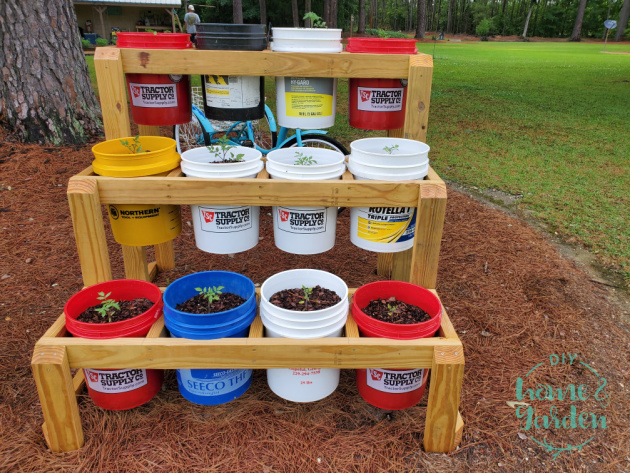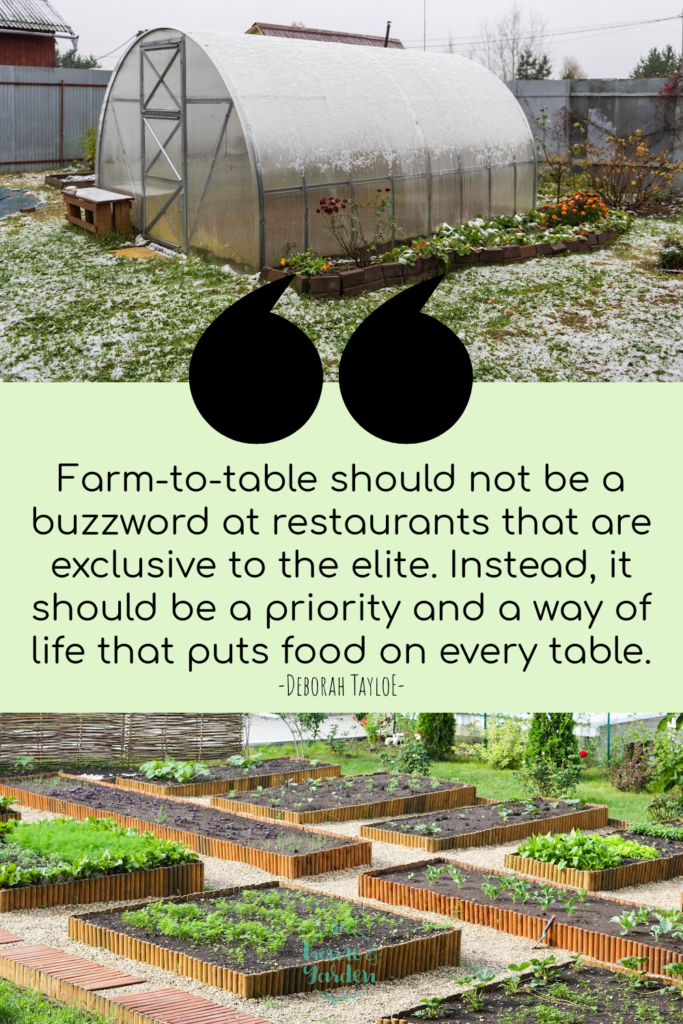To grow kale in your garden is like growing health! Yes, that’s true.
‘Remember the wise saying, ‘you reap what you sow?’
You grow kale today, and you reap a powerhouse of nourishing nutrients that constantly keep your overall body function and health in check.
Kale (Brassica oleracea), a member of the brassica family, is among the most accessible greens to grow, taking only about two months from seed to harvest.
It’s cold-hardy, utilizing every inch of the cold weather to intensify its flavor.
Kale is among the few veggies you can confidently grow in climates with mildly cold winters. It will stop growing as the snow falls but will eventually pick its vigorous growth at the sense of sunlight.
Frequently Asked Questions About Kale
To help you quickly grow kale this season, here is some detailed info on the commonly asked questions about this tasty (and nutrient-dense) green.
The video below will quickly explain the health benefits of kale before we move on to how to grow it:
Is kale easy to grow?
Kale is a very easy vegetable provided you meet its basic needs—adequate light, water, and nutrients.
Does kale grow back after you cut it?
Yes, it grows back after cutting; but only when harvested the right way!
Here is the thing… How do you harvest kale, so it keeps growing?
Using a sharp knife, scissor, or a pruner, harvest the bottom (outermost) leaves from the ‘connecting point,’ making sure to remove each leaf’s stem from the main stem altogether.
The top new leaves should remain in place to support the production of more foliage. As you may be aware, leaves play a crucial role in photosynthesis. Also, remove any yellowed leaves to keep the plant healthy and green.
How long does it take to grow kale back?
After harvesting, kale plants grow new leaves within four to seven days.
How long does a kale plant last?
It depends on two primary factors–the warmth of your location and the plant variety. Most varieties will last two years; however, some perennial cultivars like Daubenton’s kale (Brassica oleracea var ramosa) can survive five to seven years.
Generally, kale is considered a biennial though often cultivated annually, especially in colder locales.
How tall does kale grow?
How tall the greens will get depends on the variety you’ve planted, but most cultivars average at 1-2 feet in both height and width.
Can you grow kale in pots?
Yes, this nutritious green veggie grows well in pots with suitable drainage holes and sufficient growth room—at least twelve inches deep and wide.
If using clay pots, consider the unglazed type for easy soil moisture regulation, thus preventing root rot. A well-draining potting mix will also help avert any chances of root death.
Can you grow kale in a 5-gallon bucket?
A 5-gallon bucket is the best for container growing; however, a 3-gallon one will still get the job done, especially for single plants.
Try an oak half-barrel for three plants for aesthetic and creative purposes.
How many kale plants can you grow in a 5-gallon bucket?
Plant only two or three plants in a 5-gallon bucket, so they have enough room to spread out.
Can you plant chard and kale together?
Yes. Swiss chard and kale have similar maintenance needs; therefore, they make great companion plants—whether grown in the same planter or close together in an outdoor garden.
If growing the two in the same container, be sure that it’s large enough to allow for spacing of at least 12 inches between the plants. This is necessary for the plants’ optimal health and growth.
You may want to use window boxes or rectangular planters.
What can you not plant with kale?
Avoid growing together this green with other brassica family members (like kohlrabi, broccoli, brussels sprouts, swiss chard, and cauliflower) to prevent the likelihood of common disease spread.
If you have a black walnut tree around, grow your kale 70 feet (or more) away from it. Black walnuts are known to eliminate any plants growing near them.
Can you grow kale from the stem?
You may be wondering, ‘Can I grow kale from kale?’
You can grow it from a robust side stem (with multiple leaves) taken from an existing healthy plant. The best time to take the cutting is usually in late summer or early spring.
How do you plant store-bought kale?
Simply root it!
Once you’ve taken the leaves off for your salad, immerse the stems in a ¾ water-filled jar.
In seven to fourteen days, you’ll notice the stems rooting, plus they’ll put forth a new set of leaves.
You can opt to continue with the water-growing method—in which case, you’ll have to change the water regularly—or transfer it outdoors into your garden.
When is the best time to plant kale?
The best time to plant kale is spring and fall.
In spring, whether transplanting or direct seeding into the garden, plant four to six weeks before your average last spring frost. For fall, direct-seed the early maturing cultivars three months before your area’s projected first fall frost date.
Grow Kale Following These Nine Easy Steps
As mentioned earlier, this leafy green is a relatively easy vegetable to grow and care for.
You can start it from seed or propagate it via stem cuttings.
Below is a step by step guide and everything you need to know to successfully grow kale:
- Start the seeds in a seed-starting tray or simply re-use paper towel rolls and eggshells.
- Add growing medium to the rolls and shells, and in each, plant a seed or two; then water generously.
- The seeds will sprout in about four or five days.
- After ten days to two weeks, transplant into the garden.
- Choose a location that allows for full sun, and work organic compost into the soil before planting—to give the plants a good start.
- Gently break the eggshell and place the plant together with the eggshell into the planting hole, then cover the soil. The shell will decompose naturally, nourishing the plant with calcium.
- Space the plants eighteen inches apart with row spacing of eighteen to twenty-four inches.
- Water immediately after planting and continue irrigating daily or every couple of days to keep the soil moist.
- Finally, you should apply mulch around the plants to help with moisture retention and keep the weeds at bay.
A Few Final Notes About How to Grow Kale
- If you reside particularly in areas with less rainfall, you may want to go the waffle gardening way for more water conservation and deep watering.
- The method involves creating a depression all around each kale plant, so the water sits around the plant, seeps deep into the soil, and feeds the root.
- For particularly not-so-rich soils, consider feeding the plants throughout the growing season with compost or high-nitrogen vegetable fertilizer, following the guidelines on the fertilizer label.
- Begin harvesting when the plants are about ten to twelve inches high; that is about two months after planting time for most people.
- Whenever possible, harvest it early in the morning when the plant is fully rejuvenated, having recovered from the previous day’s heat.
- This plant is quite frost-hardy—surviving mild winters in USDA zones seven to nine. The plants will collapse when exposed to heavy snow or frost—the reason you may want to overwinter them in a protected area or greenhouse, primarily if you reside in areas with freezing winters.

Common pests and diseases
Kale, like other brassicas, is susceptible to clubroot and black rot as well as cabbageworm, aphids, slugs, and flea beetles.
Be sure to keep an eye on the plants for signs of infection or feeding, including holes in the leaves.
Consider natural predators like ladybugs to combat most of these pest offenses, or use organic sprays with neem oil and pure castile soap.
Takeaway on How to Grow Kale
Kale growing is a pretty straightforward process, but only if you promptly follow the game’s rules. Here is a quick recap:
- Ensure the soil is organic matter-rich, moist, well-draining, and slightly acidic.
- Select a full sun spot free of any tall plants that may shade it.
- Lastly, treat problems as soon as you notice them. It may sound obvious, but it’s a crucial step if you’re determined to grow kale successfully in your garden.



